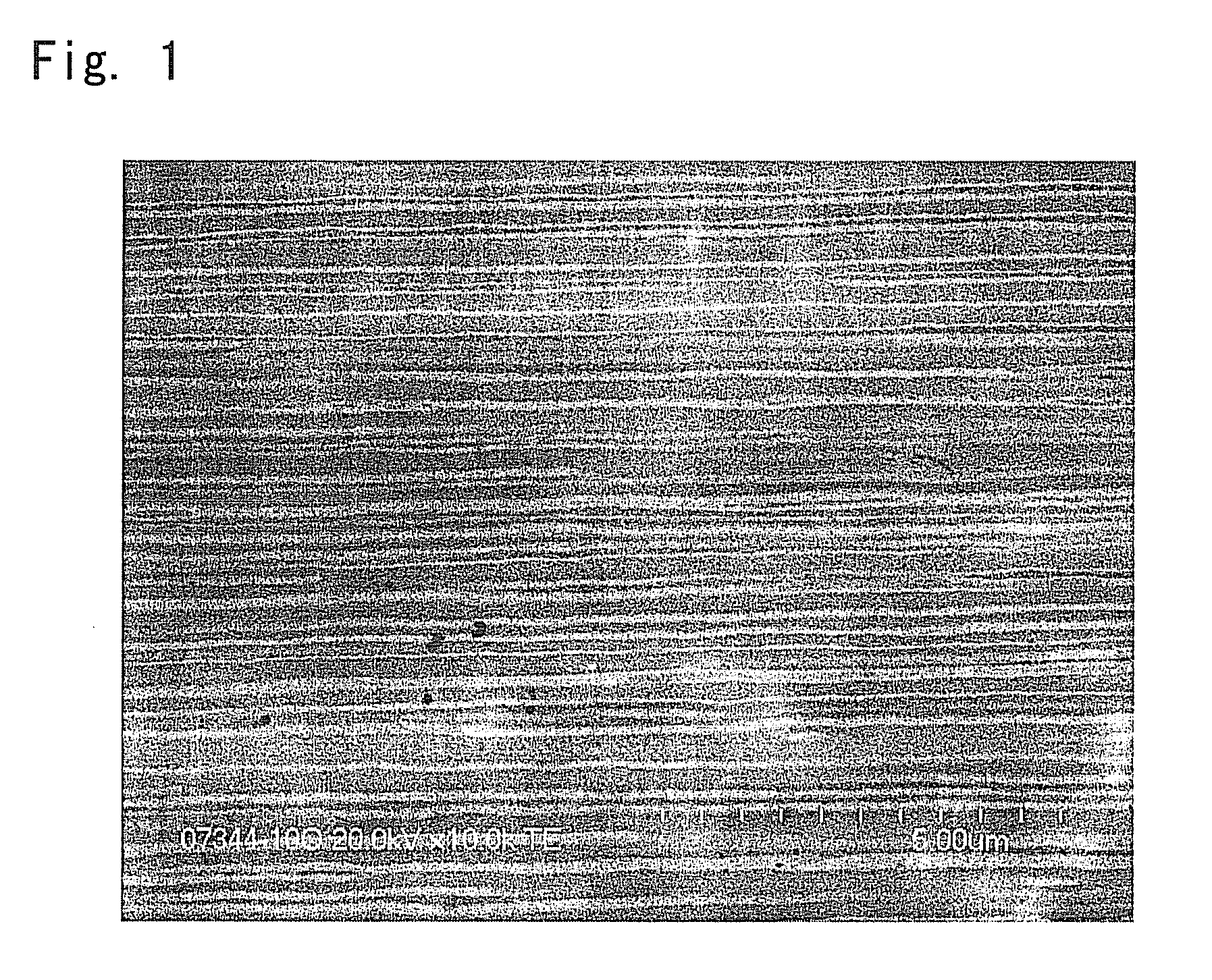Adhesive film or sheet
a technology of adhesive film and adhesive sheet, applied in the direction of film/foil adhesive, adhesive articles, synthetic resin layered products, etc., can solve the problems of increasing adhesive force, increasing adhesive force, and not being satisfactory, and achieves excellent transparency, increased adhesive force, and maintaining balance
- Summary
- Abstract
- Description
- Claims
- Application Information
AI Technical Summary
Benefits of technology
Problems solved by technology
Method used
Image
Examples
example 1
[0114]42 Parts by mass of an ethylene / vinyl acetate copolymer (A1) and 58 parts by mass of a high-density polyethylene (B1) were melt-kneaded together by using a 65 mmφ extruder at 200° C. to obtain an adhesive resin composition.
[0115]By using an extrusion cast molding machine (65 mmφ), the resin composition was extruded onto a parting film of a polyethylene terephthalate (PET), and was cut into a film of a predetermined size. The parting film was peeled off, and a sample film was obtained (total thickness, 90 μm).
[0116]The sample film was evaluated for its properties concerning the items shown in Table 1. The results were as shown in Table 1.
example 2
[0117]38 Parts by mass of the ethylene / vinyl acetate copolymer (A1) and 52 parts by mass of the high-density polyethylene (B1) were mixed together. To 90 parts by mass of the sum of (A1) and (B1), further, there was added 10 parts by mass of an ethylene / vinyl acetate copolymer (A3) containing 13% by mass of a tackifier [hydrogenated aromatic hydrocarbon resin (softening point of 90° C. as measured by the ring and ball test). The mixture was melt-kneaded together by using the same apparatus under the same conditions as those of Example 1 to obtain an adhesive resin composition.
[0118]The resin composition was extruded in the same manner as in Example 1 and was cut into a film of a predetermined size. Thereafter, the parting film was peeled off, and a sample a film was obtained (total thickness, 90 μm).
[0119]The sample film was evaluated for its properties in the same manner as in Example 1. The results were as shown in Table 1.
example 3
[0127]42 Parts by mass of the ethylene / vinyl acetate copolymer (A1) and 58 parts by mass of the high-density polyethylene (B1) were melt-kneaded together by using the 65 mm extruder at 200° C. to obtain the adhesive resin composition.
[0128]By using a multilayer extrusion cast molding machine (40 minφ×3), the low-density polyethylene (Mirason 16SPO used in Comparative Example 1) was extruded as a substrate layer and the above composition was extruded as an adhesive layer onto a PET parting film, which was, then, cut into a film of a predetermined size. The parting film was peeled off, and a sample film was obtained (film constitution: low-density polyethylene / low-density polyethylene / adhesive resin composition=20 / 20 / 20 μm; total thickness, 60 μm).
[0129]The sample film was evaluated for its properties to obtain the results as shown in Table 2.
PUM
| Property | Measurement | Unit |
|---|---|---|
| melting point | aaaaa | aaaaa |
| melting point | aaaaa | aaaaa |
| density | aaaaa | aaaaa |
Abstract
Description
Claims
Application Information
 Login to View More
Login to View More - R&D
- Intellectual Property
- Life Sciences
- Materials
- Tech Scout
- Unparalleled Data Quality
- Higher Quality Content
- 60% Fewer Hallucinations
Browse by: Latest US Patents, China's latest patents, Technical Efficacy Thesaurus, Application Domain, Technology Topic, Popular Technical Reports.
© 2025 PatSnap. All rights reserved.Legal|Privacy policy|Modern Slavery Act Transparency Statement|Sitemap|About US| Contact US: help@patsnap.com


